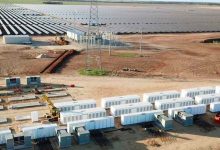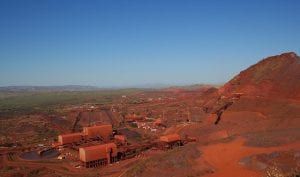The Australian Energy Market Operator has declared a “fault level” shortfall in north west Victoria as it continues to look for solutions to the “system strength” issues that have caused five solar farms to have their output cut in half, and put a question mark over future developments.
The declaration of the “fault level” shortfall in north-west Victoria puts the onus back on local networks – rather than proponents of wind and solar farms – to ensure they have the equipment needed to keep the grid secure.
In short, it means that the local networks will be responsible for the installation of between three and six “synchronous condensers” in the region to guarantee system strength, particularly in the case of the snowballing impact of an outage elsewhere.
A similar declaration was made in South Australia two years ago, leading to a program that will see four such units installed in a coordinated fashion in that state over the next 12 months.
Many developers and grid operators want the same call to be made for parts of NSW, to prevent what they see as a scattergun and more expensive approach when individual projects add the machines on the newly introduced “do no harm” rules. Transgrid has warned that this ruling is making the grid less secure.
Five big and relatively new solar farms – Wemen, Karadoc, Bannerton and Gannawarra in Victoria, along with Broken Hill in NSW – had their output cut in half in mid September when new modelling by AEMO identified the system strength issues in the case of a network fault elsewhere.
The issue had been expected to be resolved “within weeks”, but it has dragged on as developers and inverter suppliers seek a work-around by fine-tuning the inverter settings.
The solar farm owners are particularly frustrated by the delays and the complexities of the process, and the restriction means that some 170MW of potential solar output will be missing from the grid, just as it enters its first major heatwave of what is expected to be a hot summer.
Victoria is also suffering from the absence of a unit at Loy Yang A, whose return to service later this week will not be in time for the first part of the heatwave this Wednesday, while a unit at the Mortlake gas generator is not expected back until the end of the month.
“AEMO has recently limited the number of inverters able to be online for a number of solar farms in north-west Victoria and south-west NSW to manage identified instabilities post contingent in this area of the network,” it says in its newly released report.
“AEMO has re-assessed the system strength projections for the Red Cliffs fault level node and AEMO declares an immediate fault level shortfall of 312 MVA at the Red Cliffs fault level node.” (See location in map below).
The only way to address this, it says, and to allow more “inverter-based” generation – i.e. wind and solar – is through local “synchronous condensers.” It provides a range of scenarios ranging from three large synchronous condensers, six medium-sized condensers at various locations, and nine smaller ones.
This is not the only solution that AEMO is proposing.
Last week, it quietly released an initial proposal for a possible new connector between Victoria and NSW that it says will unlock the pipeline of more than 8GW of wind and solar on the Victoria side of the border, and 20GW of new projects on the NSW side.
It says this new generation will be needed because of the anticipated closure of brown coal generators such as Yallourn, their potential early closure, and the risk of unexpected outages from these ageing coal generators.
 It has identified a range of potential solutions (see map above) – from line upgrades to new links to unlock potential renewable energy zones – and is also calling for non-network options (i.e. battery storage), because of the speed in which these could be delivered.
It has identified a range of potential solutions (see map above) – from line upgrades to new links to unlock potential renewable energy zones – and is also calling for non-network options (i.e. battery storage), because of the speed in which these could be delivered.
“More than a third of the existing conventional generation capacity in the NEM is expected to withdraw by 2032. Once these generators retire, a new generation mix based on renewables is projected to be lower-cost than new conventional generation,” it says.
But it notes that transfer limitations could reduce access to low-cost generator sources across states, and prevent the efficient and reliable dispatch of supply to Victoria and New South Wales load centres, without additions to the network.
AEMO and Transgrid are inviting submissions before a formal proposal is put under the regulatory investment test procedures that are conducted by the energy regulator, although AEMO has called for a fast-tracking of such decisions under its Integrated System Plan.









